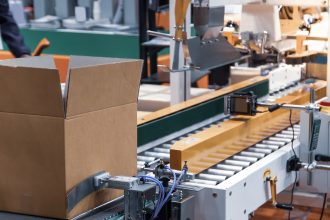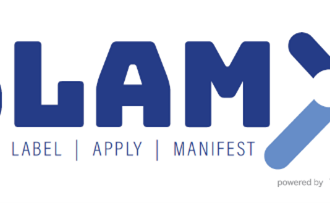Preventing Burnout with Automation

As warehouse management continues struggling to fully staff their operations, they need to look at both causes and effects of the labor shortage. One of the big causes is burnout, coupled with mental health issues, all stemming from the dull, repetitive nature of work in a warehouse. Menial tasks that require little to no thought can be detrimental to your employees.
The Agency for Healthcare Research and Quality has defined burnout as a long-term stress reaction marked by emotional exhaustion, depersonalization, and the lack of personal accomplishment that often arises after performing repetitive, time-consuming work. It also can lead to lack of concentration, engagement, and sense of purpose.[1]
If you look at the Mayo Clinic’s identified list of causes of burnout, they include the following:
- A lack of control
- Unclear job expectations
- Dysfunctional workplace dynamics
- Extremes of activity
- Lack of social support
- Work-life imbalance[2]
The Clinic adds that when workers experience burnout, they can also suffer from conditions like anxiety, depression, distress, poor decision making, shortened attention spans, and lack of motivation.
All of these also add up in lost productivity, recently totaling $1 trillion in lost productivity annually according to (site the source for more credibility). The accompanying economic GDP loss is estimated at $500 billion.
If you worry that your employees are exhibiting signs of burnout, there are ways to help them become more engaged and less stressed. You can automate many of the repetitive/mundane processes in your facility, which streamlines production and avoids the hefty cost of job stress. SLAM equipment—those tools that streamline the final 100 feet of the warehouse—is one of those areas worth your focus.
SLAM (scan, label, apply, manifest) is one of the most affordable and easy areas to automate. When you automate your SLAM operations, you’ll achieve increased throughput, better material flow, reliable measurements of outgoing parcels and boxes, and fast, efficient, and accurate printing, labeling, and shipping. All that leads to improved efficiencies, but it also helps prevent worker burnout.
Utilizing automated SLAM equipment frees workers from the tedium of simple, repetitive tasks, allowing them to learn new skills as they operate the automated equipment —skills they can take to other areas of the warehouse or use for upward mobility. These are all skill sets desired in the younger generations, in particular, which is often an untapped labor pool in the warehouse. They are less likely to suffer ergonomic injuries, and feel like they have more purpose in their work.
When you automate processes or the entire operation, you involve your employees in more productive, results-oriented work. This is good for mental well-being, helps avoid job burnout, and aids in employee retention. Adding automation in small increments is an easy approach to take steps in the right direction, and SLAM is a logical first place to help stop burnout in its tracks.
The MHI SLAM Industry Group is conducting a survey to better understand the challenges and opportunities facing the ecommerce fulfillment operations. As a practitioner in this field, your insight and experiences are of utmost importance to us. We would be grateful if you could spare a few minutes to share your thoughts and opinions through this survey. Your participation will contribute to shaping the future of the industry.
To learn more about MHI’s SLAM industry group: www.mhi.org/slam
More information about Scanning, Labeling, Applying, Manifesting:
Prevent Chargebacks Via SLAM Equipment
Why SLAM Should Include Dimensioning Equipment
Handling Every Type Of Packaging
Best Practices For The Last 100 Feet Of Fulfillment
Why A Vertical Reciprocating Conveyor Can Play A Critical Role …
Podcast: Transitioning From Manual To Automated SLAM (The Last 100 feet)



